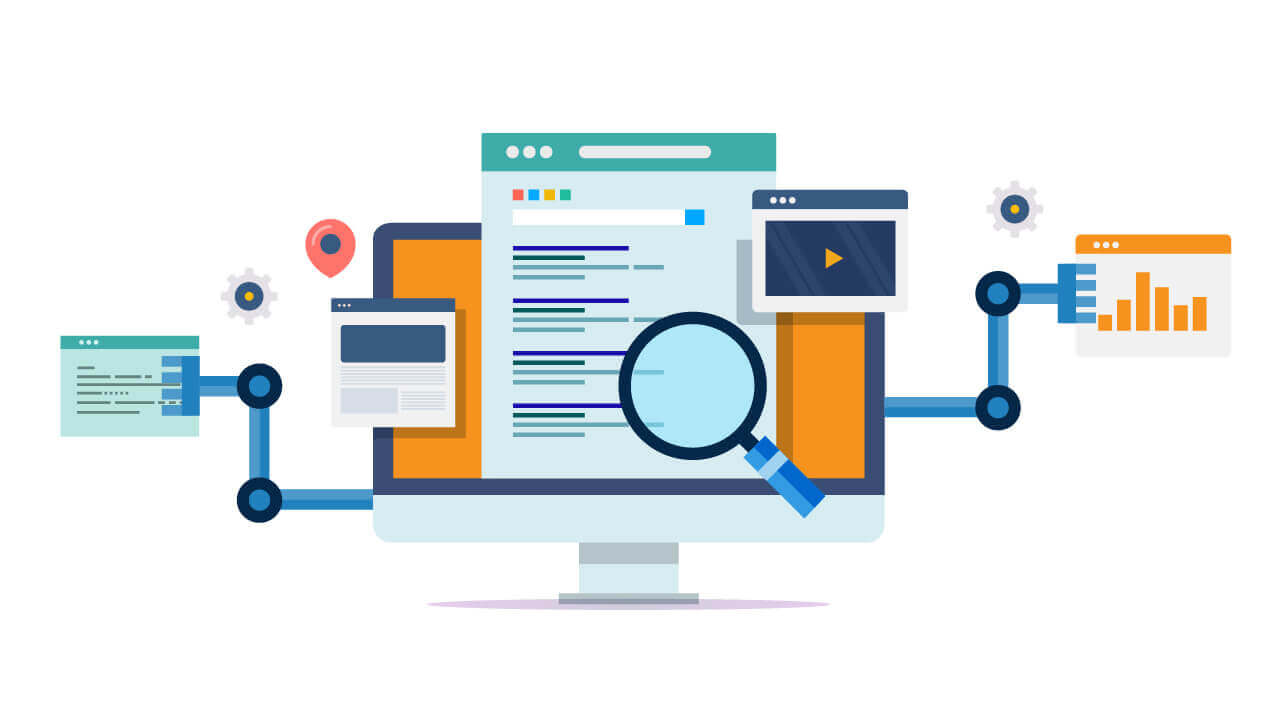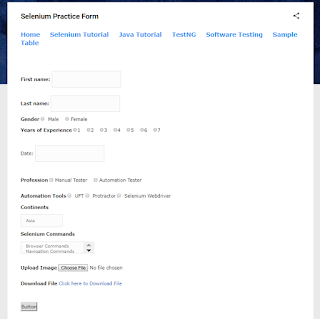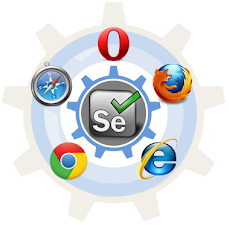Complete Guide to Software Testing Levels: From Unit to End-to-End Testing
Testing is an essential phase in software development, and it is essential to ensure that the software application or product functions as expected, meet the requirements and satisfies the user's needs. Testing is conducted at different levels of software development to detect defects, errors, and inconsistencies in the software.
These levels of testing are commonly referred to as testing levels, and each level of testing has its purpose, scope, and objective. In this article, we will discuss the different levels of testing and their specific characteristics, along with detailed examples.
Table of Contents
- Unit Testing
- Smoke Testing
- Sanity Testing
- Integration Testing
- System Testing
- Regression Testing
- Acceptance Testing
- Alpha Testing
- Beta Testing
- End-to-End Testing
1. Unit Testing
Unit testing is usually performed by developers themselves using testing frameworks, such as JUnit, NUnit, or PyUnit, as they are the ones who have a better understanding of the code and how it works. Developers write test cases to test each function or method in the code and execute them using the testing framework.
1.1. Example of Unit Testing:
Let's take an example to understand unit testing better. Consider a simple Java program that calculates the sum of two numbers. The program consists of a single function called "sum," which takes two integers as input and returns their sum.
arduinopublic class Calculator {
public static int sum(int num1, int num2) {
return num1 + num2;
}
}To test the "sum" function using unit testing, we need to write test cases that cover all possible scenarios, such as:
- Test Case 1: Testing the sum of two positive integers
- Test Case 2: Testing the sum of two negative integers
- Test Case 3: Testing the sum of a positive and a negative integer
- Test Case 4: Testing the sum of zero and a positive integer
- Test Case 5: Testing the sum of zero and a negative integer
We can write the test cases using a testing framework like JUnit, as shown below:
javaimport static org.junit.Assert.assertEquals;
import org.junit.Test;
public class CalculatorTest {
@Test
public void testSumPositive() {
int result = Calculator.sum(2, 3);
assertEquals(5, result);
}
@Test
public void testSumNegative() {
int result = Calculator.sum(-2, -3);
assertEquals(-5, result);
}
@Test
public void testSumPositiveNegative() {
int result = Calculator.sum(2, -3);
assertEquals(-1, result);
}
@Test
public void testSumZeroPositive() {
int result = Calculator.sum(0, 3);
assertEquals(3, result);
}
@Test
public void testSumZeroNegative() {
int result = Calculator.sum(0, -3);
assertEquals(-3, result);
}
}In this example, we have written five test cases to test the "sum" function with different input values. Each test case validates the output of the "sum" function against the expected result using the "assertEquals" method provided by the JUnit framework.
When we execute these test cases using the JUnit framework, it will run each test case and report the result. If all test cases pass, it indicates that the "sum" function is working correctly and meets the specified requirements. If any test case fails, it indicates that the "sum" function has a bug or an error that needs to be fixed.
Thus, unit testing helps identify and fix errors or bugs in individual units of code, leading to more robust and reliable software applications.
1.2. Benefits of Unit Testing:
Early Detection of Defects: Unit testing helps detect defects or bugs in the code at an early stage of the development process, making it easier and less expensive to fix them.
Simplifies Debugging: When a defect is found in a unit test, it is easy to locate and fix the code causing the issue since the test focuses on a single function or method.
Improves Code Quality: Unit testing promotes good coding practices and encourages developers to write clean, modular, and reusable code.
Reduces Risks: Unit testing reduces the risks associated with making changes to the code, such as introducing new features or fixing bugs.
Facilitates Refactoring: Refactoring is the process of improving the code without changing its external behavior. Unit tests provide a safety net for refactoring, ensuring that the changes do not break the existing functionality.
However, it is important to note that unit testing alone cannot ensure the quality of a software application. It is just one of the many testing techniques used in the software development life cycle. Other testing techniques, such as integration testing, system testing, and acceptance testing, are required to ensure that the software application meets the specified requirements and is free from defects.
In conclusion, unit testing is a crucial testing technique that ensures the quality of individual units or components of a software application. It helps detect and fix defects at an early stage, simplifies debugging, improves code quality, reduces risks, and facilitates refactoring. Unit testing is an essential practice for any software development team to deliver high-quality software applications.
2. Smoke Testing
Smoke testing, also known as Build Verification Testing (BVT), is a type of testing that checks whether the key functionalities of an application are working as expected after a build or release. Smoke testing is usually conducted after the completion of integration testing and before regression testing.
The goal of smoke testing is to ensure that the basic functionality of the application is working as intended and to identify any showstopper defects that might block further testing or development. Smoke tests are typically quick and focused on critical functionalities of the application, with the aim of identifying major issues that could impact the application's stability or usability.
2.1. Example of Smoke Testing:
Here's an example scenario to illustrate the process of smoke testing:
Suppose you are working on a project that involves developing an e-commerce website. After several weeks of development, the team has completed a new build of the website and is ready to conduct smoke testing.
The first step is to create a set of test cases that cover the critical functionalities of the application, such as logging in, adding items to the cart, and checking out. The test cases should be simple, focused, and quick to execute.
Next, the team will execute the smoke tests on the new build to check whether the critical functionalities of the website are working as intended. For example, they might check whether the homepage loads properly, whether the search function is functional, and whether users can add items to their cart and proceed to checkout.
If any of the smoke tests fail, the team will stop testing and report the issue to the development team for resolution. The development team will then fix the issue and release a new build for smoke testing.
On the other hand, if all the smoke tests pass, the team will proceed to conduct more extensive testing, such as integration testing and regression testing.
Smoke testing is a critical part of the testing process, as it helps identify major issues early on in the development cycle, saving time and resources. It is an essential practice for any software development team, especially for those working on large and complex projects.
2.2. Benefits of Smoke Testing:
Early Detection of Critical Issues: Smoke testing helps detect critical issues in the application at an early stage of the development cycle, allowing developers to fix them before more extensive testing is conducted.
Saves Time and Resources: Smoke testing is a quick and effective way to ensure that the basic functionalities of an application are working as expected. It helps save time and resources by identifying major issues early on.
Enhances Quality: Smoke testing enhances the overall quality of the application by ensuring that the critical functionalities are working as intended. This helps improve the user experience and increases customer satisfaction.
Facilitates Communication: Smoke testing helps facilitate communication between different teams involved in the development process. It provides a common understanding of the critical functionalities of the application and helps identify issues that need to be resolved.
Reduces Risks: Smoke testing reduces the risks associated with releasing a new version of the application. It helps ensure that the basic functionalities are working as intended, minimizing the chances of customer complaints and negative feedback.
However, it is important to note that smoke testing is not a substitute for comprehensive testing. It only checks the basic functionalities of the application and cannot identify all the defects in the software. It is essential to conduct more extensive testing, such as integration testing and regression testing, to ensure that the application meets the specified requirements and is free from defects.
In conclusion, smoke testing is a critical testing technique that ensures the basic functionalities of an application are working as intended. It helps detect critical issues early on in the development cycle, saves time and resources, enhances quality, facilitates communication, and reduces risks. Smoke testing is an essential practice for any software development team to deliver high-quality software applications.
3. Sanity Testing
Sanity testing, also known as a subset of regression testing, is a type of software testing that is performed after code changes have been made to ensure that the system is still functioning as expected. This type of testing is usually performed when small changes are made to the code, such as bug fixes, minor enhancements, or cosmetic changes, and it focuses on ensuring that these changes have not introduced any new defects or issues into the system.
The objective of sanity testing is to quickly evaluate the system's functionality, stability, and usability after the code changes have been made. It is a basic level of testing that aims to identify any major issues that may have been introduced into the system as a result of the code changes. The focus of sanity testing is on testing the core functionality of the system rather than testing every feature of the application.
Sanity testing is usually performed manually and is generally not automated. The testing process involves running a set of predefined tests that focus on the areas that are most likely to have been affected by the code changes. These tests are designed to check that the system is still functional and that no new issues have been introduced. The results of the testing are then evaluated, and any issues that are identified are reported to the development team for further analysis and resolution.
3.1. Example of Sanity Testing:
Some common examples of tests that are performed during sanity testing include:
Testing basic functionalities of the system: Sanity testing checks that the basic functionalities of the system are still working as expected after the code changes. For example, if a change was made to a login page, sanity testing would check that the login functionality is still working.
Testing critical workflows: Sanity testing tests the critical workflows of the system to ensure that they are still functional after the code changes. For example, if a change was made to the checkout process of an e-commerce website, sanity testing would test the checkout process to ensure that it is still working.
Testing the performance of the system: Sanity testing tests the performance of the system to ensure that it is still performing at an acceptable level after the code changes. For example, if a change was made to the search functionality of a website, sanity testing would test the search functionality to ensure that it is still performing at an acceptable level.
Testing the user interface: Sanity testing checks the user interface of the system to ensure that it is still functional and user-friendly after the code changes. For example, if a change was made to the color scheme of a website, sanity testing would test the user interface to ensure that it is still user-friendly and visually appealing.
3.2. Benefits of Sanity Testing:
Early Detection of Defects: Sanity testing helps detect defects early in the development cycle, which can help reduce the time and cost of fixing defects.
Cost-Effective: Sanity testing is a cost-effective way to ensure that the system is still functional after code changes have been made.
Time-Saving: Sanity testing is a quick way to evaluate the system's functionality after code changes have been made. It helps identify any major issues that may have been introduced into the system without having to perform a full regression test.
Improved Quality: Sanity testing helps improve the quality of the system by ensuring that the basic functionalities are still working as expected after code changes have been made.
In conclusion, sanity testing is an essential testing technique that helps ensure that the system is still functioning as expected after code changes have been made. It is a quick and cost-effective way to evaluate the system's functionality, stability, and usability after code changes have been made. Sanity testing is a critical testing practice for any software development team to ensure that the system meets the specified requirements and is free from defects.
4. Integration Testing
Integration Testing is a type of software testing that is performed to evaluate the compatibility and interaction between different modules of an application. The main objective of Integration Testing is to check if different software modules that have already been unit tested can function correctly when combined and integrated.
During Integration Testing, the focus is on detecting interface defects between modules, data flow issues, and interaction problems. Integration Testing can be performed using various approaches, such as top-down, bottom-up, and hybrid. In this process, testers can use either manual or automated testing methods to evaluate the system's performance.
4.1. Example of Integration Testing
To understand Integration Testing, let us consider an example of an e-commerce website. Suppose the website has three modules: Product Catalogue, Shopping Cart, and Payment Gateway. Unit Testing has been completed for each of these modules. Now, the next step is to integrate these modules and perform Integration Testing.
In Integration Testing, the main focus is on testing the interaction between these modules. For example, the tester would test if the products selected by the user from the Product Catalogue module are being correctly added to the Shopping Cart module. The tester would also check if the Payment Gateway module is correctly processing the user's payment details.
Integration Testing can be performed using different approaches, depending on the complexity of the system. Let us look at some of the approaches:
Top-down approach: In this approach, the testing begins with the highest-level modules, and then lower-level modules are integrated gradually. In the example of the e-commerce website, the Payment Gateway module, which is the highest-level module, would be tested first, followed by the Shopping Cart and Product Catalogue modules.
Bottom-up approach: In this approach, the testing starts with the lowest-level modules and then moves up to higher-level modules. In the example of the e-commerce website, the Product Catalogue module, which is the lowest-level module, would be tested first, followed by the Shopping Cart and Payment Gateway modules.
Hybrid approach: This approach combines both the top-down and bottom-up approaches, where the testing starts at both the highest and lowest levels and moves towards the middle. This approach can be useful in systems that have a high degree of complexity.
In addition to these approaches, Integration Testing can also be performed using various techniques such as big-bang integration, continuous integration, and distributed integration.
Integration Testing is critical in ensuring that the application functions as expected and meets the user's requirements. It helps in identifying and resolving interface issues and ensures that the system is functioning seamlessly as a whole. It also helps in reducing the risk of defects during the later stages of testing, thereby reducing the overall cost and time required for testing.
Integration Testing can be performed at different stages of the Software Development Life Cycle (SDLC). Depending on the stage, the testing may be performed on different environments, such as a development environment, testing environment, or production environment.
4.2. Benefits of Integration Testing:
Early detection of defects: Integration Testing can help in identifying interface and integration issues at an early stage. This helps in preventing these issues from being carried forward into the later stages of testing or the production environment.
Improved software quality: Integration Testing helps in improving the quality of the software by ensuring that the different modules of the application function correctly when integrated.
Reduced risk: Integration Testing helps in reducing the risk of defects being discovered during the later stages of testing or in the production environment. This, in turn, helps in reducing the overall cost and time required for testing.
Increased confidence: Integration Testing helps in building confidence in the software by ensuring that the system functions as expected when different modules are integrated.
Better collaboration: Integration Testing requires collaboration between developers, testers, and other stakeholders. This can help in improving communication and collaboration between different teams and departments, leading to better quality software.
4.3. Integration Testing Challenges:
Integration Testing can also have some challenges, such as:
Complexity: Integration Testing can be complex, especially in systems that have a high degree of complexity. This can lead to challenges in identifying and resolving interface issues.
Time-consuming: Integration Testing can be time-consuming, especially if the system is large or has a high degree of complexity. This can lead to delays in the testing process and the delivery of the software.
Cost: Integration Testing can be costly, especially if a large number of test cases need to be developed and executed. This can lead to budgetary constraints and other resource-related challenges.
In conclusion, Integration Testing is an important part of the software testing process that helps in ensuring the compatibility and interaction between different modules of an application. It helps in identifying interface issues and ensures that the system functions correctly as a whole. Integration Testing can be performed using different approaches and techniques, and it can have several benefits, such as improved software quality and reduced risk. However, it can also have some challenges, such as complexity, time consumption, and cost.
5. System Testing
System Testing is a type of software testing that focuses on testing the behavior and functionality of a complete system or application as a whole. The purpose of System Testing is to ensure that the system meets the specified requirements and functions correctly in its intended environment.
System Testing involves testing the system's interfaces, functionality, reliability, performance, security, and usability. It also involves testing the system's compatibility with other systems or applications that it may interact with.
5.1. System Testing Process:
The System Testing process involves the following steps:
Test Planning: In this phase, the testing team defines the test objectives, scope, and test plan for the System Testing. The test plan includes the testing strategy, test scenarios, test cases, and test data.
Test Design: In this phase, the testing team designs the test cases and test scenarios based on the system requirements, specifications, and design documents.
Test Execution: In this phase, the testing team executes the test cases and reports any defects or issues found during the testing. The testing team also performs regression testing to ensure that the system's changes or modifications do not affect the existing functionality.
Test Reporting: In this phase, the testing team generates test reports that summarize the test results, including the defects found, their severity, and the steps taken to resolve them.
5.2. Benefits of System Testing:
Increased confidence: System Testing helps in building confidence in the software by ensuring that the system functions as expected in its intended environment.
Improved software quality: System Testing helps in improving the software quality by identifying defects and issues in the system before it is released to the production environment.
Reduced risk: System Testing helps in reducing the risk of defects being discovered during the later stages of testing or in the production environment. This, in turn, helps in reducing the overall cost and time required for testing.
Better collaboration: System Testing requires collaboration between developers, testers, and other stakeholders. This can help in improving communication and collaboration between different teams and departments, leading to better quality software.
5.3. System Testing Challenges:
However, System Testing can also have some challenges, such as:
Time-consuming: System Testing can be time-consuming, especially if the system is large or complex. This can lead to delays in the testing process and the delivery of the software.
Cost: System Testing can be costly, especially if a large number of test cases need to be developed and executed. This can lead to budgetary constraints and other resource-related challenges.
Limited coverage: System Testing may not cover all possible scenarios or use cases that the system may encounter in the production environment. This can lead to defects or issues being discovered in the production environment.
In conclusion, System Testing is an important part of the software testing process that focuses on testing the behavior and functionality of a complete system or application as a whole. It helps in ensuring that the system meets the specified requirements and functions correctly in its intended environment. System Testing can have several benefits, such as increased confidence, improved software quality, and reduced risk. However, it can also have some challenges, such as being time-consuming and costly, and limited coverage.
6. Regression Testing
Regression testing is a type of software testing that is performed to ensure that the changes or modifications made to a software system do not adversely affect its existing functionality. The purpose of regression testing is to identify any defects or issues that may have been introduced due to the changes or modifications made to the system.
Regression testing is important because any changes or modifications made to a software system can have unintended consequences, such as causing previously functioning components to fail or introducing new defects into the system. Regression testing helps to identify these issues before the system is released to production or deployed in the live environment.
6.1. Regression testing Process:
The regression testing process involves the following steps:
Test planning: In this phase, the testing team reviews the changes or modifications made to the system and identifies the impacted areas that require regression testing. The testing team also identifies the test cases that need to be executed as part of the regression testing.
Test case selection: In this phase, the testing team selects the test cases that need to be executed as part of the regression testing. The test cases may be selected based on their criticality, complexity, or the areas of the system that have been modified.
Test execution: In this phase, the selected test cases are executed to ensure that the system functions correctly after the changes or modifications have been made. Any defects or issues identified during the testing are reported to the development team for resolution.
Test reporting: In this phase, the testing team generates a report that summarizes the results of the regression testing. The report includes information on the test cases executed, any defects or issues identified, and the steps taken to resolve them.
Regression testing can be performed at various stages of the software development lifecycle, such as during the unit testing, integration testing, and system testing phases. Regression testing can also be performed manually or through the use of automated testing tools.
6.2. Benefits of Regression Testing:
Improved software quality: Regression testing helps to identify defects or issues that may have been introduced due to changes or modifications made to the system. By identifying these issues early, they can be addressed and resolved before the system is released to production or deployed in the live environment, improving the overall quality of the software.
Increased confidence: Regression testing helps to build confidence in the software by ensuring that the system functions correctly after the changes or modifications have been made.
Reduced risk: Regression testing helps to reduce the risk of defects or issues being discovered in the production or live environment by identifying them early in the testing process.
6.3. Regression Testing Challenges:
However, regression testing can also have some challenges, such as:
Time-consuming: Regression testing can be time-consuming, especially if a large number of test cases need to be executed. This can lead to delays in the testing process and the delivery of the software.
Resource-intensive: Regression testing can be resource-intensive, requiring a significant amount of time and effort from the testing team. This can lead to resource-related challenges and constraints.
Limited coverage: Regression testing may not cover all possible scenarios or use cases that the system may encounter in the production or live environment. This can lead to defects or issues being discovered in the production or live environment.
In conclusion, regression testing is an important part of the software testing process that helps to ensure that changes or modifications made to a software system do not adversely affect its existing functionality. Regression testing can have several benefits, such as improved software quality, increased confidence, and reduced risk. However, it can also have some challenges, such as being time-consuming and resource-intensive, and limited coverage.
7. Acceptance Testing (UAT)
Acceptance Testing, also known as User Acceptance Testing (UAT), is a type of software testing that is performed to determine if a software system meets its specified requirements and is ready for delivery to the end users or clients.
The main objective of Acceptance Testing is to ensure that the system meets the business requirements and is user-friendly, reliable, and easy to use. Acceptance Testing is typically performed by the end-users, clients, or stakeholders who are responsible for the acceptance of the system.
7.1. Acceptance Testing Process:
The Acceptance Testing process involves the following steps:
Requirement Analysis: In this phase, the project requirements are analyzed, and a test plan is developed based on the requirements. The test plan should include the scope of testing, testing strategy, and test cases.
Test Plan Review: The test plan is reviewed and approved by the project stakeholders, including end-users and clients.
Test Case Creation: Based on the requirements and test plan, test cases are created. Test cases should cover all the functional and non-functional requirements of the system.
Test Case Review: The test cases are reviewed and approved by the project stakeholders, including end-users and clients.
Test Execution: In this phase, the test cases are executed on the system. The testers or end-users should perform the test cases, record the results, and report any defects or issues found during the testing.
Defect Reporting: Any defects or issues found during the testing should be reported to the development team for further analysis and resolution.
Defect Resolution: The development team analyzes the defects or issues reported by the testers or end-users and resolves them.
Retesting: Once the defects are resolved, the testers or end-users should perform the retesting to ensure that the system meets all the requirements and is ready for delivery.
Acceptance Testing can be further classified into two types:
User Acceptance Testing (UAT): This type of testing is performed by the end-users or clients to ensure that the system meets their business requirements and is user-friendly.
Contract Acceptance Testing (CAT): This type of testing is performed by the clients to ensure that the system meets the contract requirements and specifications.
Acceptance Testing is a critical phase of the software development lifecycle. It ensures that the system is ready for delivery and meets all the business and user requirements. Successful Acceptance Testing ensures that the software system is of high quality and satisfies the needs of the end users and clients.
To perform Acceptance Testing, it is essential to have a clear understanding of the business requirements, project goals, and end-users expectations. The testers or end-users should have a thorough knowledge of the system's functionality and use cases to create effective test cases and scenarios.
Acceptance Testing is typically performed at the end of the software development lifecycle, after the completion of System Testing. However, it is recommended to involve the end-users or clients in the testing process from the beginning to ensure that the system meets their requirements.
7.2. Benefits of Acceptance Testing:
Early Detection of Issues: Acceptance Testing helps in identifying defects or issues early in the software development lifecycle, which reduces the overall cost of fixing them.
Customer Satisfaction: Acceptance Testing ensures that the software system meets the business requirements and user expectations, which leads to customer satisfaction.
Improved Quality: Acceptance Testing helps in improving the quality of the software system by identifying defects and issues and ensuring that the system meets all the requirements.
Reduced Risks: Acceptance Testing reduces the risks of project failure by ensuring that the system is ready for delivery and meets all the requirements.
In conclusion, Acceptance Testing is an essential part of the software development lifecycle, and it ensures that the software system meets the business requirements and user expectations. It is recommended to involve the end-users or clients in the testing process to ensure that the system meets their requirements and expectations.
8. Alpha Testing
Alpha Testing is one of the testing levels in the software development lifecycle. It is a type of Acceptance Testing, which is performed by the developers or the testing team in a controlled environment. The main objective of Alpha Testing is to identify and fix any issues or bugs in the software system before it is released to the end users.
Alpha Testing is usually performed in a laboratory or a controlled environment, which simulates the end-users environment. In this testing level, the software is tested under realistic conditions to ensure that it meets the business requirements and end-users expectations.
8.1. Benefits of Alpha Testing:
Early Detection of Issues: Alpha Testing helps in identifying defects or issues early in the software development lifecycle, which reduces the overall cost of fixing them.
Improved Quality: Alpha Testing helps in improving the quality of the software system by identifying defects and issues and ensuring that the system meets all the requirements.
Increased Confidence: Alpha Testing gives the developers and testing team confidence in the software system, knowing that it has been tested thoroughly and meets the business requirements.
Reduced Risks: Alpha Testing reduces the risks of project failure by ensuring that the system is ready for release and meets all the requirements.
In Alpha Testing, the software system is tested in different ways, including functional testing, usability testing, performance testing, and security testing. The testing team simulates different scenarios to identify any issues or bugs and fix them before the software is released to the end users.
One of the key advantages of Alpha Testing is that it allows the developers and testing team to get feedback from the end-users, which helps in improving the quality of the software system. The feedback from the end-users is used to make changes and modifications to the software system before it is released to the market.
In conclusion, Alpha Testing is an essential part of the software development lifecycle, and it ensures that the software system meets the business requirements and end-users expectations. It is recommended to perform Alpha Testing in a controlled environment to identify and fix any issues or bugs before the software is released to the end users.
9. Beta Testing
Beta Testing is a testing level that is performed after the Alpha Testing phase and before the final release of the software system. It is a type of Acceptance Testing, which is performed by a group of end-users in a real-world environment. The main objective of Beta Testing is to gather feedback from end users and identify any issues or bugs that were not identified during the earlier testing phases.
Beta Testing is usually performed on a pre-release version of the software system, which is called a beta version. The beta version is made available to a selected group of end-users, who use the software system in their daily routine and provide feedback to the developers or testing team.
9.1. Benefits of Beta Testing:
Real-world Environment: Beta Testing is performed in a real-world environment, which helps in identifying any issues or bugs that were not identified during the earlier testing phases.
User Feedback: Beta Testing allows the developers or testing team to get feedback from end-users, which helps in improving the software system's quality and usability.
Reduced Risks: Beta Testing reduces the risks of project failure by identifying any issues or bugs before the software is released to the market.
Increased Confidence: Beta Testing gives the developers and testing team confidence in the software system, knowing that it has been tested thoroughly by end-users.
During Beta Testing, the end-users use the software system in a real-world environment and provide feedback on the usability, functionality, and performance of the system. The feedback is collected and analyzed by the developers or testing team, who use it to identify any issues or bugs and fix them before the final release of the software system.
One of the key advantages of Beta Testing is that it allows the developers or testing team to gather feedback from a diverse group of end-users, which helps in identifying issues or bugs that were not identified during the earlier testing phases. The feedback is used to make changes and modifications to the software system before the final release.
In conclusion, Beta Testing is an essential part of the software development lifecycle, and it ensures that the software system meets the end-users expectations and requirements. It is recommended to perform Beta Testing in a real-world environment with a diverse group of end-users to identify any issues or bugs before the final release of the software system.
10. End-to-End Testing
End-to-End Testing is a software testing level that verifies the entire software system's functionality from start to finish. It involves testing the software system's complete flow, including all the integrated components and subsystems, to ensure that they function together correctly. The goal of End-to-End Testing is to ensure that the software system meets the end user's requirements and expectations.
End-to-End Testing is usually performed after the Integration Testing phase and before the System Testing phase. It is a black-box testing technique that tests the entire system from the end-user perspective, without looking into the internal workings of the system. End-to-End Testing is also known as Business Scenario Testing, User Scenario Testing, or Scenario Testing.
The main objective of End-to-End Testing is to ensure that the software system's functionality works correctly in real-world scenarios. It involves simulating different use cases, scenarios, and workflows to ensure that the software system meets the end user's requirements and expectations.
10.1. Benefits of End-to-End Testing:
Improved Quality: End-to-End Testing ensures that the entire software system works correctly and meets the end-user's requirements and expectations, which results in improved software quality.
Increased Confidence: End-to-End Testing gives the developers and testing team confidence in the software system's functionality, knowing that it has been tested thoroughly from start to finish.
Reduced Risks: End-to-End Testing reduces the risks of project failure by identifying any issues or bugs before the software is released to the market.
Improved User Experience: End-to-End Testing helps in identifying any issues or bugs that could impact the end-user's experience, which helps in improving the overall user experience.
During End-to-End Testing, the software system's entire flow is tested, including all the integrated components and subsystems. It involves simulating different use cases, scenarios, and workflows to ensure that the software system meets the end-user's requirements and expectations. The testing team verifies the software system's functionality, performance, usability, and security aspects during End-to-End Testing.
End-to-End Testing is usually performed using automated testing tools, which help in simulating different use cases and scenarios quickly and efficiently. The testing team creates test scripts that simulate different workflows and scenarios, and the automated testing tools execute these scripts to test the software system's entire flow.
In conclusion, End-to-End Testing is an essential part of the software development lifecycle, and it ensures that the software system meets the end-user's requirements and expectations. It is recommended to perform End-to-End Testing after the Integration Testing phase and before the System Testing phase using automated testing tools to ensure efficient and accurate testing.









.png)

















Comments
Post a Comment